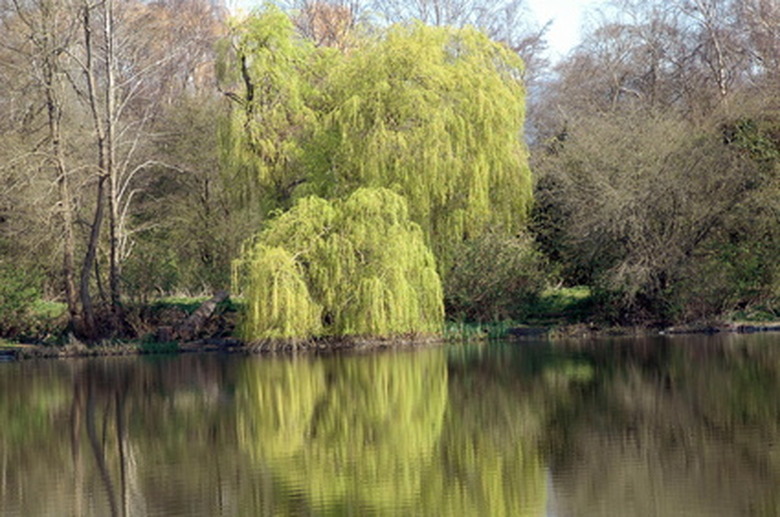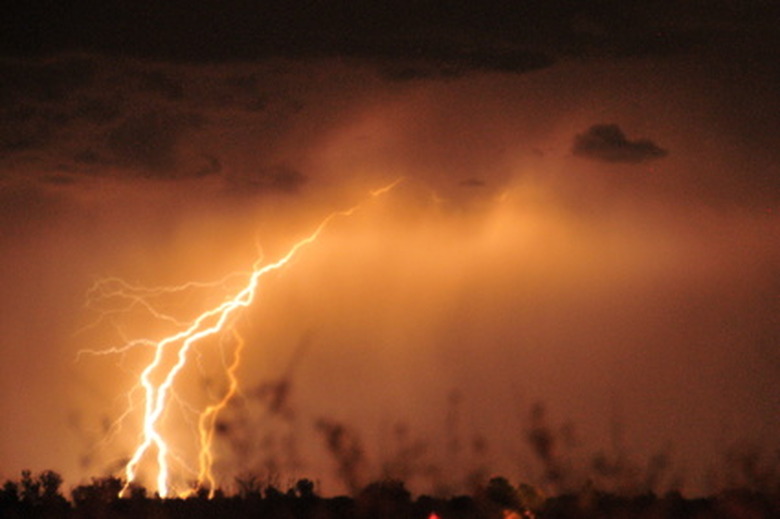The Myth Of The Weeping Willow
The weeping willow tree is as imposing as it is graceful. Often swaying in gentle winds edging ponds and lakes as sole surveyors of all that lay before them, willows are large and prolific growers that have thrived for thousands of years. Adding such a majestic presence to their landscapes, it is easy to understand how they inspire artists and writers and why they are interwoven into the art, religion and folklore of cultures the world over.
Tree
The deciduous weeping willow tree (Salix) grows to heights of 70 feet and can spread equally as wide. Originating in China, its many subspecies are found across the globe, and it is a hardy grower in the U.S. (planting zones 2 through 9). With its huge crowned canopy and dense drooping branches with elongated leaves, the willow offers sweeping expanses of shade. They are favorite additions to landscapes large enough to contain their massive forms. Proper placement is imperative as their far-traveling roots seeking water have also been known to wreck havoc on septic systems and foundations.
- The weeping willow tree is as imposing as it is graceful.
- Often swaying in gentle winds edging ponds and lakes as sole surveyors of all that lay before them, willows are large and prolific growers that have thrived for thousands of years.
Uses
In addition to their aesthetic qualities, willows have many uses. In ancient times, funeral torches were made of willow wood. Ancient cultures and later Native Americans used willow bark for medicinal purposes. Chewing on the twigs and bark of the willow was known to relieve fever, inflammation and headaches. Willow bark does contains salicin, a natural chemical similar to that found in aspirin. Today, willow bark as an herb in tea or capsule form is still used to alleviate pain associated with menstrual cramps, tendonitis, bursitis and lower back pains. Because willow branches are both pliable and strong, they are also used to weave baskets and furniture.
- In addition to their aesthetic qualities, willows have many uses.
- Because willow branches are both pliable and strong, they are also used to weave baskets and furniture.
Stories
There may be as many stories about the willow as there are places where it took root. In ancient Babylon, the willow was negatively associated with the death of Alexander the Great, when its boughs were said to have swept Alexander's crown from his head as he passed it by. While this bit of foreshadowing may have fit well with Alexander's later demise, myths associated with the willow more generally concentrated on its prolific growth rate and its drooping, almost visually sad appearance.
Ancient Greek Mythology
One tale tells of young Phaeton, son of Apollo, who is told by his mother the true identity of his father. In seeking confirmation, Phaeton goes to Apollo and asks if the god is indeed his father. To prove himself, Apollo agrees to grant Phaeton one wish. His wish, to drive his father's chariot across the sky, proves deadly to the boy when he cannot control the vehicle. While Apollo has protected his son from the heat and flames of the vehicle, the earth is not so well protected. He scorches the earth as he approaches too closely and threatens all life upon it. To save the earth, Zeus strikes down Phaeton with a thunderbolt. The boy is killed and his sisters weep so at his loss that their tears harden to amber. Eventually, they are turned into poplar trees and become rooted along the river Eridanus. It is this swaying poplar that becomes known as the weeping willow.
- There may be as many stories about the willow as there are places where it took root.
- While this bit of foreshadowing may have fit well with Alexander's later demise, myths associated with the willow more generally concentrated on its prolific growth rate and its drooping, almost visually sad appearance.
Japanese Folklore
"Green Willow" and "Willow Wife" are two tales in Japanese literature that tell the story of young lovers. With the willow tree serving as metaphor for their dying love, the couples' fate is sealed before their love can truly blossom. When the trees in the tales are felled, so too is the love of the protagonists. In "Green Willow," when the young warrior Tomotada reaches for his love, he finds instead that his arms are full of the wispy leaves of the willow tree. When he finally dies, from his remains spring a willow tree that entwines with his Green Willow and beneath the earth their roots embrace.


